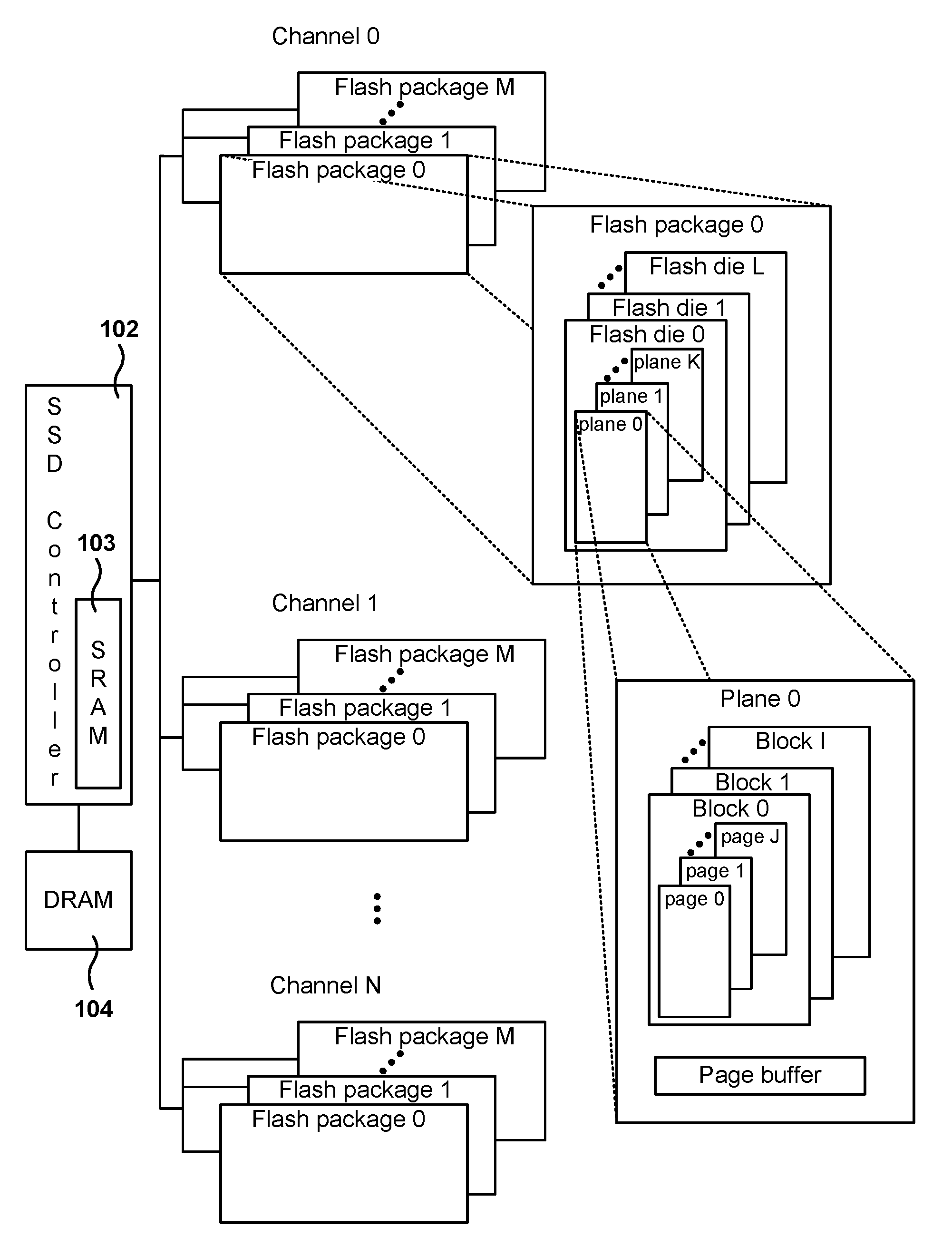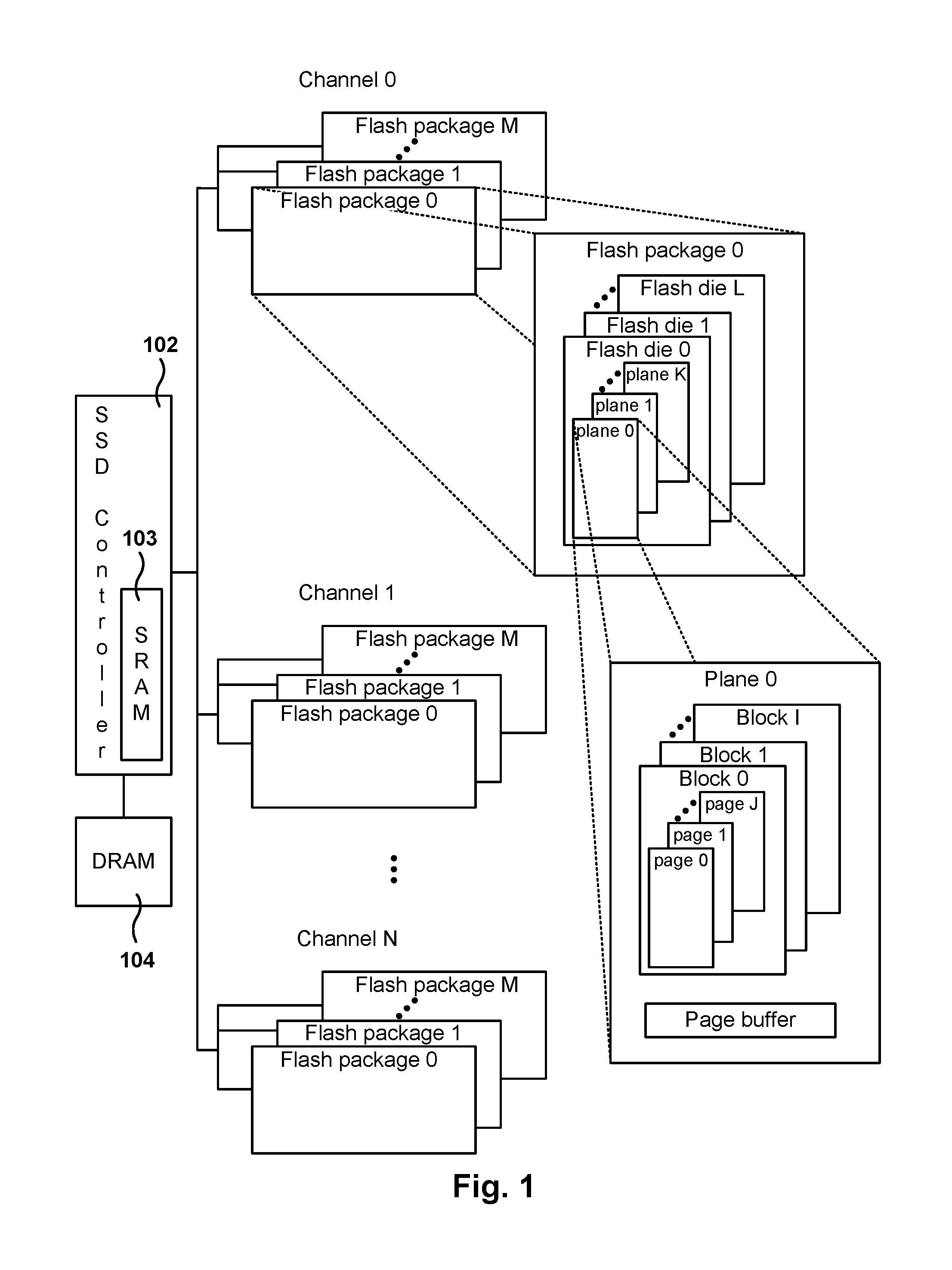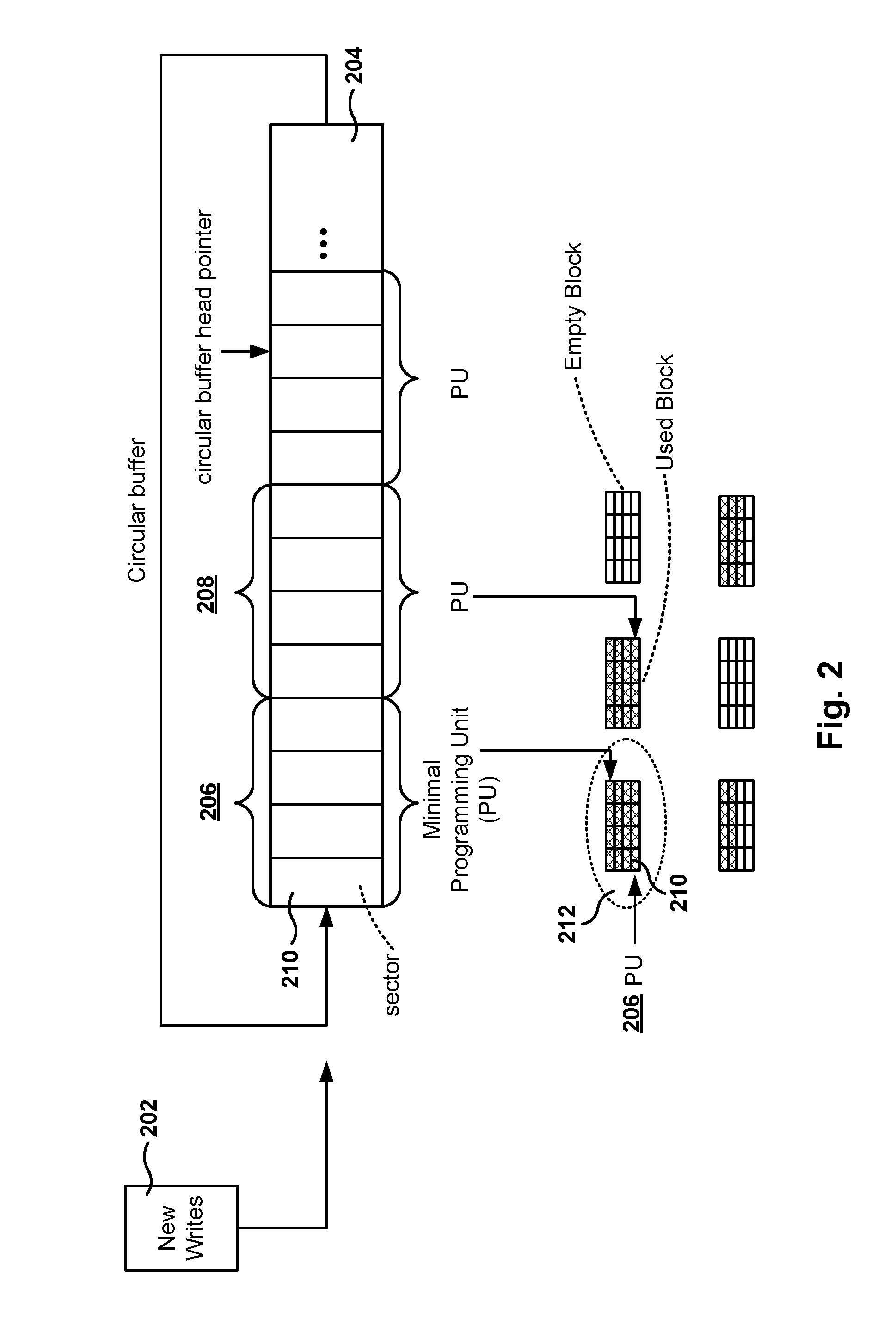Low write amplification in solid state drive
a solid-state drive and low-pass filter technology, applied in the direction of input/output to record carriers, instruments, computing, etc., can solve the problems of write amplification and degradation of the performance of the ssd
- Summary
- Abstract
- Description
- Claims
- Application Information
AI Technical Summary
Benefits of technology
Problems solved by technology
Method used
Image
Examples
Embodiment Construction
[0023]In one embodiment, an SSD includes a buffer area for buffering incoming sectors in order to reduce write amplification. For each stream that sends data to the SSD, a mapping area is allocated in RAM memory for buffering the incoming sectors of that stream. The SSD has a program unit (PU) (e.g., a page), and when the buffer for a given stream is filled up to at least the size of the PU, then the data in the buffer is written to the flash memory. This way, the data written to the page in flash memory fills up the page completely and the page holds data of just one stream.
[0024]There are three benefits in reducing write amplification. First, since the total number of writes for the lifetime of the SSD is fixed to an upper limit, reducing the write amplification increases the life of the drive. Second, since the total write bandwidth is also fixed on the SSD, reducing write amplification also improves the write bandwidth. Third, it reduces the memory required to support a large nu...
PUM
 Login to View More
Login to View More Abstract
Description
Claims
Application Information
 Login to View More
Login to View More - R&D
- Intellectual Property
- Life Sciences
- Materials
- Tech Scout
- Unparalleled Data Quality
- Higher Quality Content
- 60% Fewer Hallucinations
Browse by: Latest US Patents, China's latest patents, Technical Efficacy Thesaurus, Application Domain, Technology Topic, Popular Technical Reports.
© 2025 PatSnap. All rights reserved.Legal|Privacy policy|Modern Slavery Act Transparency Statement|Sitemap|About US| Contact US: help@patsnap.com



